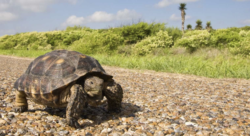PRP
PRP. Platelet-rich plasma. It’s a relatively new treatment used for rehab of injured tissues, and is considered a “regenerative medicine” modality. Blood is taken from the athlete, placed in a centrifuge so that platelets, which are fragments of blood cells involved in the clotting process, are concentrated. The injection of these platelets into injured tissues stimulates the release of the body’s own growth factors, which in turn stimulate an increase in cells that repair injured tissues. In theory, the body should in time be able to do the job on its own. But where there is chronic tendinopathy, as is often the case with proximal hamstring tendons, it’s hard for the body to get ahead of it and an acute problem becomes chronic. PRP has been shown to be a viable option as reported in the Muscle, Ligaments, and Tendons Journal (is there not a research journal for everything!) Hamstrings are often the runner’s nemesis. Yet we couldn’t run without them. Our hamstrings allow us to pull our leg backward (concentric movement) so we move forward and when the leg is extending in front of us, they serve as an eccentric brake to keep our gait controlled and rhythmic. They work in concert with the quadriceps. One … Continue reading

